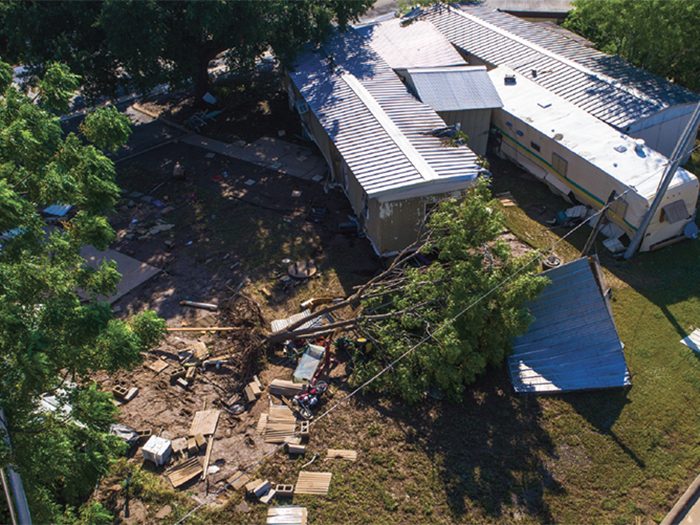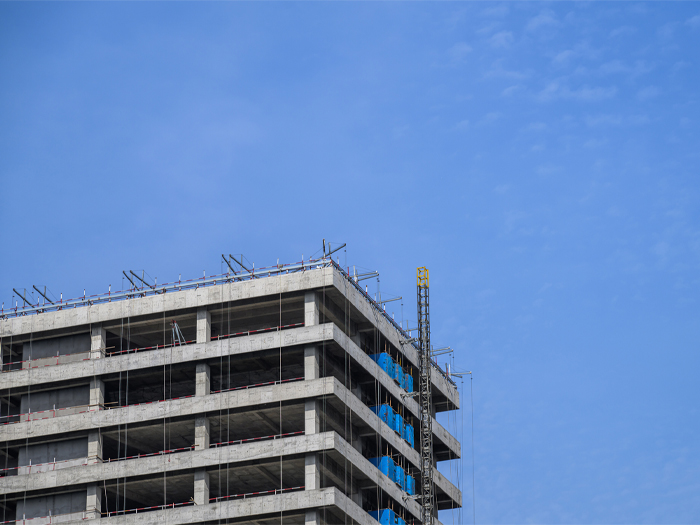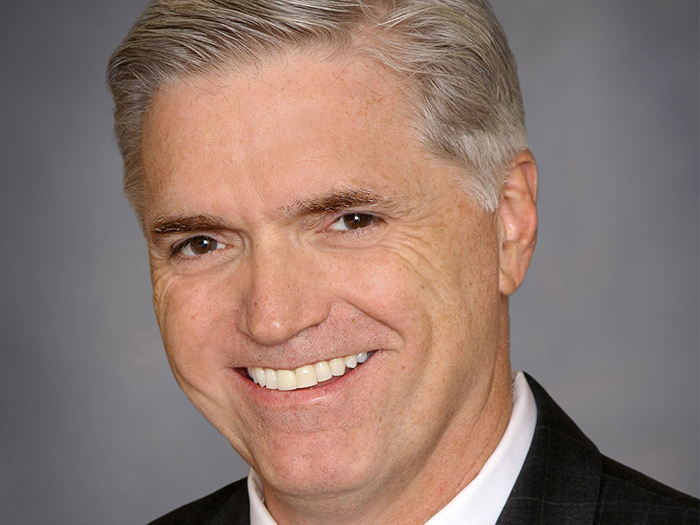Property Insurance Rates Could Double by 2040. Swiss Re Says You Can Thank Climate Change

Swiss Re’s recently released a new sigma report, “More risk: the changing nature of P&C insurance opportunities to 2040,” forecasts a “riskier and more complex” P&C landscape in coming years, along with global P&C premiums more than doubling from USD 1.8 trillion in 2020 to USD 4.3 trillion in 2040, and a shift in P&C portfolio composition from lower-risk motor insurance towards higher-risk property and liability lines.
Drivers of these trends include economic development in emerging economies, technological innovations, and, perhaps most notably, the inarguable impact of global climate change.
Thomas Holzheu, Swiss Re’s chief economist, Americas, said the report, “clarified very clearly how climate change is already part of the current landscape, how it will continue, and how broadly it spreads. I think it is a factor that goes through all of the other lines of business, and, apart from the economic development, it is the biggest additional driver here on top of these developments.”
Economic development will remain the primary driver of premium growth, for several reasons.
“More people, more value, more income driving up demand,” said Holzheu.
“It’s a story of asset accumulation in mature economies, where levels of insurance-demand are relatively high. So, there is asset accumulation and rising liability claims that are driven by wealth accumulation and rising income levels. But in the emerging markets, it’s in addition to that,” he said.
“Obviously, they have been growing faster and so their capital stock is growing faster and private development accumulation is on a particularly strong trajectory because there is rapid urbanization happening, there’s demographic shifts from rural toward urban population, which implies home ownership. And there is a strong increase in car ownership. All of this is driving property casualty insurance demand.”
Factors Impacting Potential Destruction
Economic development and climate change also combine to put more buildings and more people in more vulnerable locations.
“We keep building more and bigger and more-expensive homes in exposed areas,” said Holzheu.
“…We see this happening in emerging economies, particularly emerging Asia, where we have just this rapid growth of mega cities. This is apartment buildings, but also commercial office rapid growth. And all these properties are exposed to hazards, including hazards from mass catastrophes.”
While auto will grow less than property, it will remain the largest line, and will be transformed by a number of trends.
“In the emerging markets, economic growth will continue to drive higher levels of car ownership and thus also solid growth in motor premiums,” the report said.
In more mature markets, however, concerns about emissions and urban congestion are expected to lead to a greater reliance on traditional public transportation and shared mobility services, and a decline in private vehicle ownership. Coupled with technological developments, such as anticipated widespread adoption of Advanced Driver Assistance Systems (ADAS), this will cause a shift in liability.
“Product liability risks will arise from advances in safety technology, as personal liability exposure is replaced with commercial covers to the extent that the car or manufacturer, rather than the driver, assumes responsibility for safe driving,” the report states.
The report also sees the potential that, “Over-reliance on technology and compensating driver behaviors may reduce some of the promise of new safety technologies.”
Telematics may also reduce risk, but privacy concerns and cyber concerns may impede adoption and blunt that impact.
It is important to note that baked into the report is a certain optimism about climate change mitigation.
“The report is based on an assumption that there is mitigation happening,” said Holzheu.
“The climate change number is centered around an assumption of a one-and-a-half-degree temperature increase through 2040. And this cannot be achieved without mitigation.”
He adds, “Things can go wrong. And if we don’t meet these global warming goals and temperatures have increased more the NatCat exposures or risks could be much stronger.”
However it plays out, the insurance industry has a role to play in preparing for and mitigating risks from the impacts of climate change.
“There’s a whole range of things to do,” Holzheu said.
“…Insurance industries can play a big role in providing the right incentives for long-term investments in making buildings more flood resistant or wind resistant and if the industry can set standards there for multi-year contracts or the ability to have discounts that a homeowner will be able to achieve over multiple years, that would be a strong incentive to provide the right signal.”
Addressing Climate Change Concern
The industry also has a role to play in helping to combat climate change itself.
“First, the infrastructure needs to become greener in the sense of reducing emissions, but then also it needs to be able to withstand more frequent, more severe Nat CAT events, like flooding or hurricanes,” said Holzheu.
“The insurance industry will play a role in insuring these investments, as there’s a lot of building activity and new technology that is exposed to risks. Think about renewable energy sources. These are a lot of assets that are exposed to Nat CAT events,” he said.
“So, there’s an importance for underwriting and accommodating these investments on the insurance side. And insurance also can play a role as one of the larger institutional investors. We can also, overall as an industry, contribute by investing in projects and green infrastructure projects and also put our weight on the scales in that respect.”
While some of the trends driving the forecast premium growth of the next 20 years are unprecedented, the premium growth itself is not.
“The growth in the last 20 years was actually slightly larger or stronger even, particularly in emerging economies. And there we did see strong economic growth in the last 20 years, compared to what we predict going forward, and that’s particularly the case for China,” said Holzheu.
“China went through a phenomenal growth spurt in the last 20 years. Going forward we see slowing of economic activity due to the aging demographics, but then also the maturation of the economy. If you look at the advanced economies, there’s also a slight slowdown, but much less, and that’s mainly due to the projection of technology being an impediment to risk growth. Apart from that in property and liability, the growth rates are actually quite comparable.”
But while premium growth may be steady, there will be a marked increase in volatility.
“In property, we will see that the share of property cat premiums in the property premium is increasing. This becomes more volatile, more heavy and more exposed to catastrophic events.”
“Overall, if you just look at the headline premium growth numbers, that actually understates the fact that the nature of this risk pool is becoming, for lack of a better word, heavier and more peak-risk-exposed.” &










